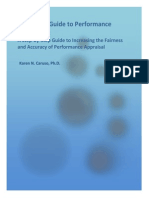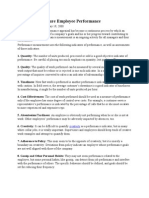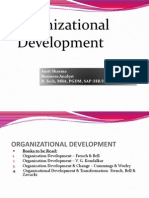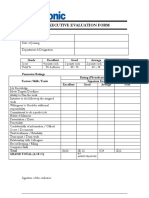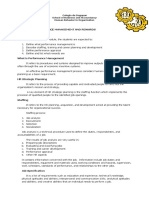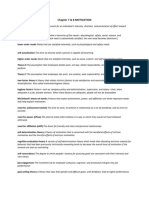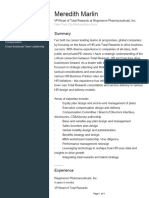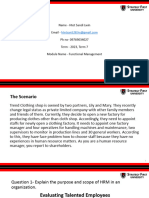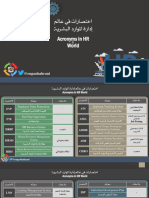0% found this document useful (0 votes)
1K views89 pagesHR Performance & Reward Systems
The document discusses performance management and reward systems. It covers topics like performance management, its components and process, as well as incentive pay. Performance management is defined as a continuous process of identifying, measuring, and developing employee performance aligned with organizational goals. The performance management process involves prerequisites, planning, execution, assessment, review, and renewal. It aims to motivate employees and enhance organizational performance. Incentive pay rewards employees for achieving predetermined work objectives and fluctuates based on their performance.
Uploaded by
bikerboyzchurnCopyright
© Attribution Non-Commercial (BY-NC)
We take content rights seriously. If you suspect this is your content, claim it here.
Available Formats
Download as PPT, PDF, TXT or read online on Scribd
0% found this document useful (0 votes)
1K views89 pagesHR Performance & Reward Systems
The document discusses performance management and reward systems. It covers topics like performance management, its components and process, as well as incentive pay. Performance management is defined as a continuous process of identifying, measuring, and developing employee performance aligned with organizational goals. The performance management process involves prerequisites, planning, execution, assessment, review, and renewal. It aims to motivate employees and enhance organizational performance. Incentive pay rewards employees for achieving predetermined work objectives and fluctuates based on their performance.
Uploaded by
bikerboyzchurnCopyright
© Attribution Non-Commercial (BY-NC)
We take content rights seriously. If you suspect this is your content, claim it here.
Available Formats
Download as PPT, PDF, TXT or read online on Scribd
/ 89

